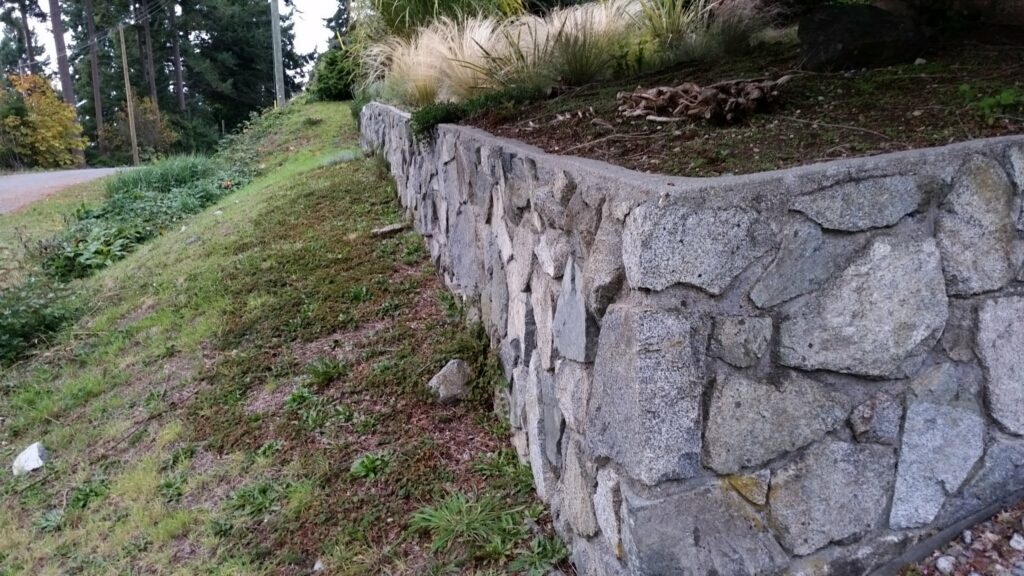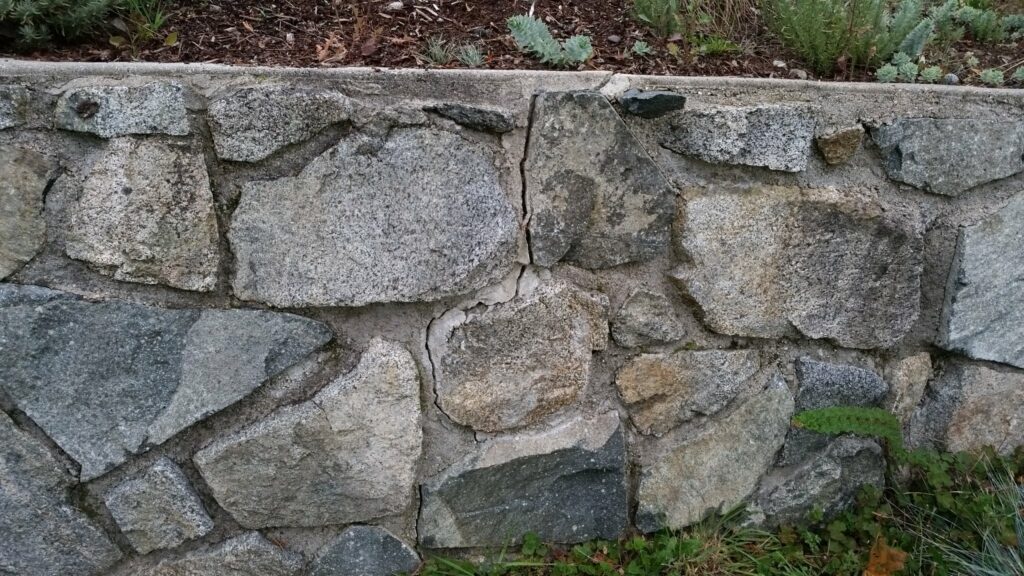Abstract: Sunshine Coast Home Inspector notes on what causes retaining walls to crack and when it is a serious condition.

Top photo: There is a crack in the retaining wall. The crack is wider at the top than the bottom, like due to differntial settlement of the footings.
Bottom photo: Viewing the wall along its length, there is no budge or lean. In this case it can be determined that it is a settlement crack, not due to water pressure behind the wall.
Costly or Not?
Another home inspection with a crack in the retaining wall. So the most important question to ask is… “Is it a concern?” A very difficult question for a property inspector to answer. The buyer really is asking is it something that needs to be fixed now or can it be ignored. Since the inspector is doing only one visit and it is a “snapshot” of current status, a measured response is required.
Suspect 1 - Water Pressure
Does the retaining wall exhibits any of the following symptoms:
- Tilt
- Lean
- Bulge
- Depression
- Active water leak
If so then there is hydraulic water pressure behind the wall. That’s just a fancy way of saying there is water behind the retaining wall that is pushing or undermining the footings. In that case, yes there is an active condition that needs to be dealt with soonest possible.
If the wall has a vertical crack and has just sunk or bent at that crack location, then it is more an issue of settlement rather than water pressure. In this case it means that the soil was inadequately compacted during construction or subsurface water has eroded the footing causing the ground to settle more than anticipated. In these situations, the remedy depends on the age of construction. If the wall was built, say in the 1070’s, it probably means that it has settled into its final position and no further action will be required by the buyer, other than to mortar the crack opening.
Suspect 2 - Settlement
If the wall has a vertical crack and has just sunk or bent down at that location, then it is more an issue of settlement rather than water pressure. In this case it means that the soil was inadequately compacted during construction or subsurface water has eroded the footing causing the ground to settle more than anticipated. In these situations, the remedy depends on the age of construction.
If the wall was built, say in the 1070’s, it probably means that it has settled into its final position and no further action will be required by the buyer, other than to mortar the crack opening.
Which Is More Costly?
Water pressure from behind the wall usually will continue to be active. Active in the sense that it will exert a constant force on the wall. It needs to be dealt with now. A contractor may have to call in a civil engineer to provide a repair methodology. It will be costly.
Settlement may be more forgiving. After the intial compaction of the ground, there comes a point of equilibrium where further compression is no longer possible. Therefore it is usually the lesser of the two evils in this case. A relatively minor repair to the cracks by the homeowner is warranted and that should take care of the issue.
Unintended Consequences
In either case, the home inspector must look at the impact of retaining wall faults on the foundations of the house.
If the ground has moved, then the foundations will be affected to some extent. The greater the ground movement the higher the risk to the foundation. That is, the foundations may have moved which in turn may have created a significant structural issue such as sloped floors.

